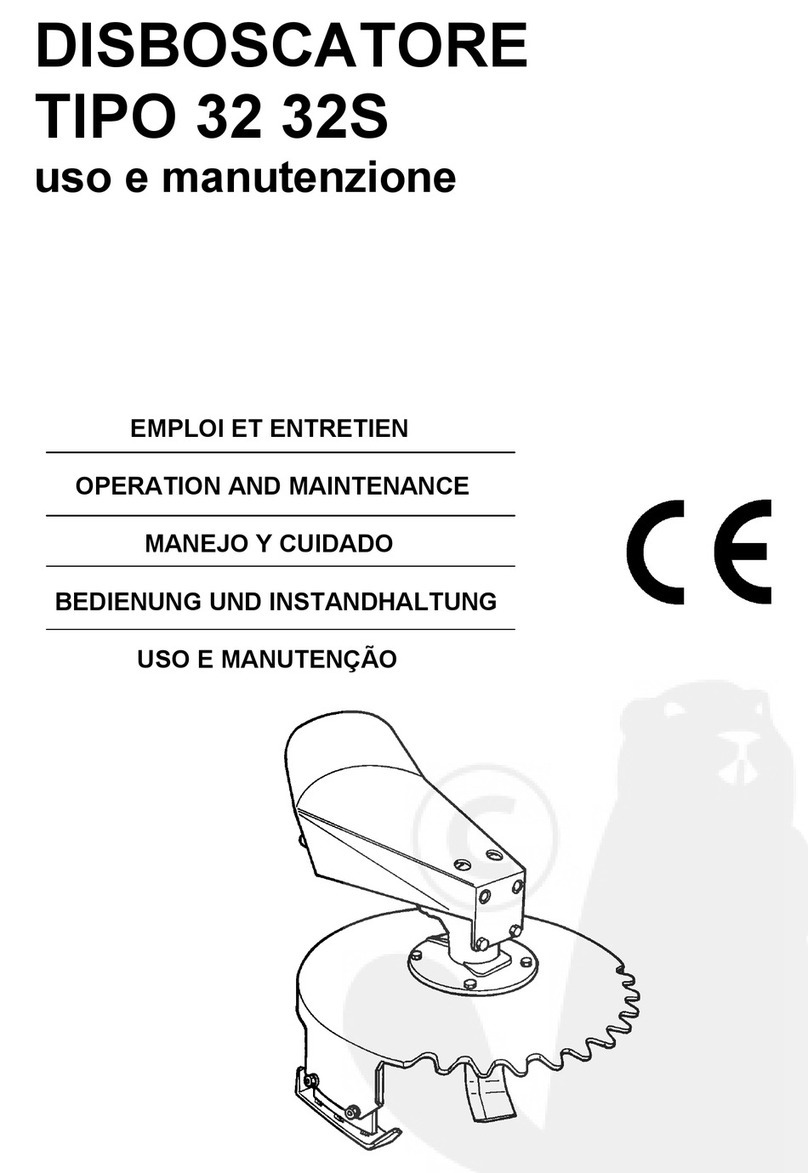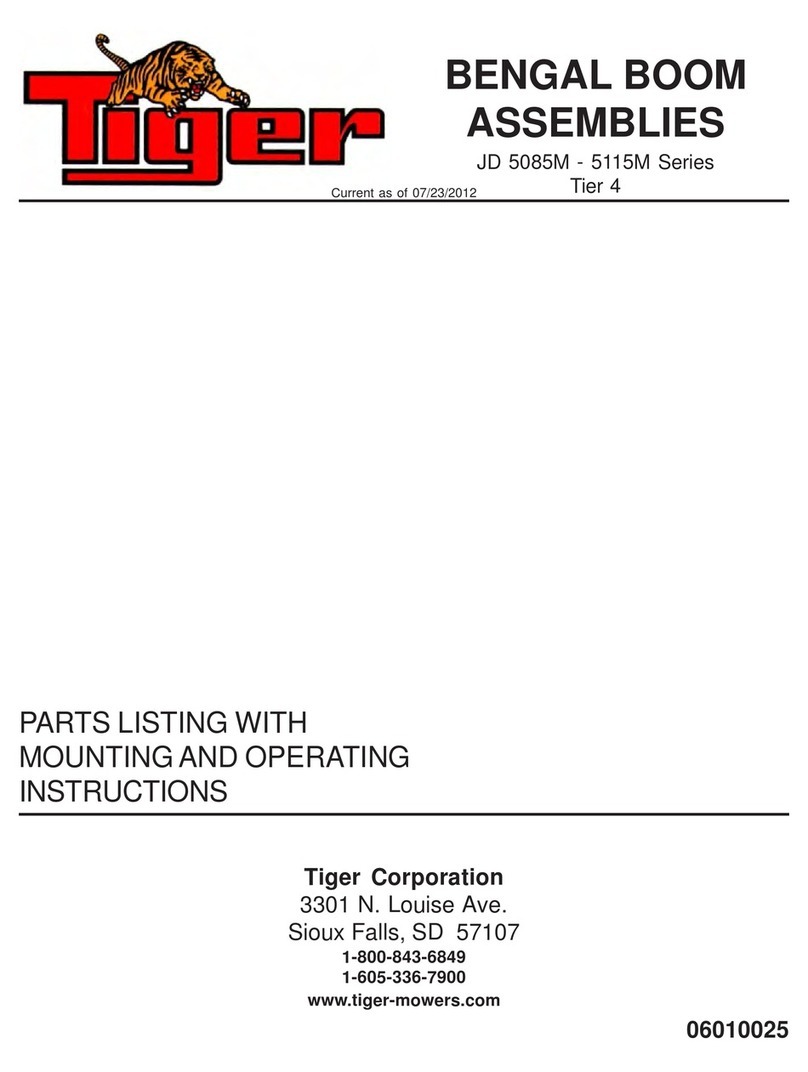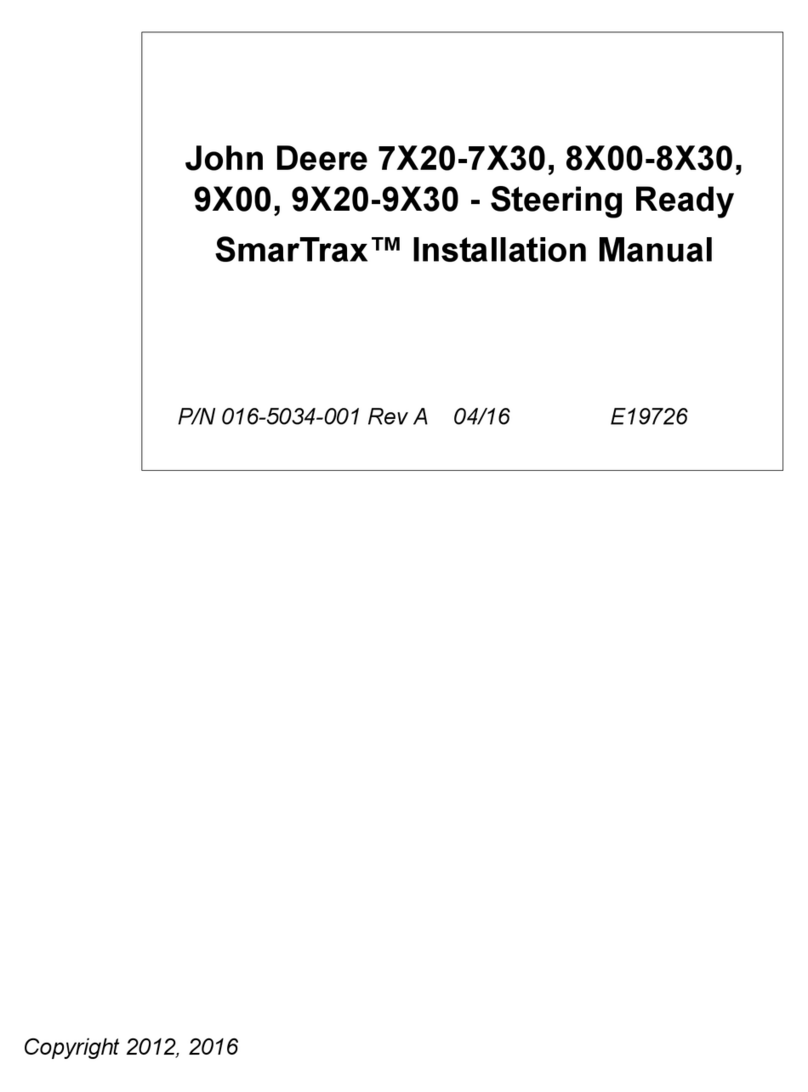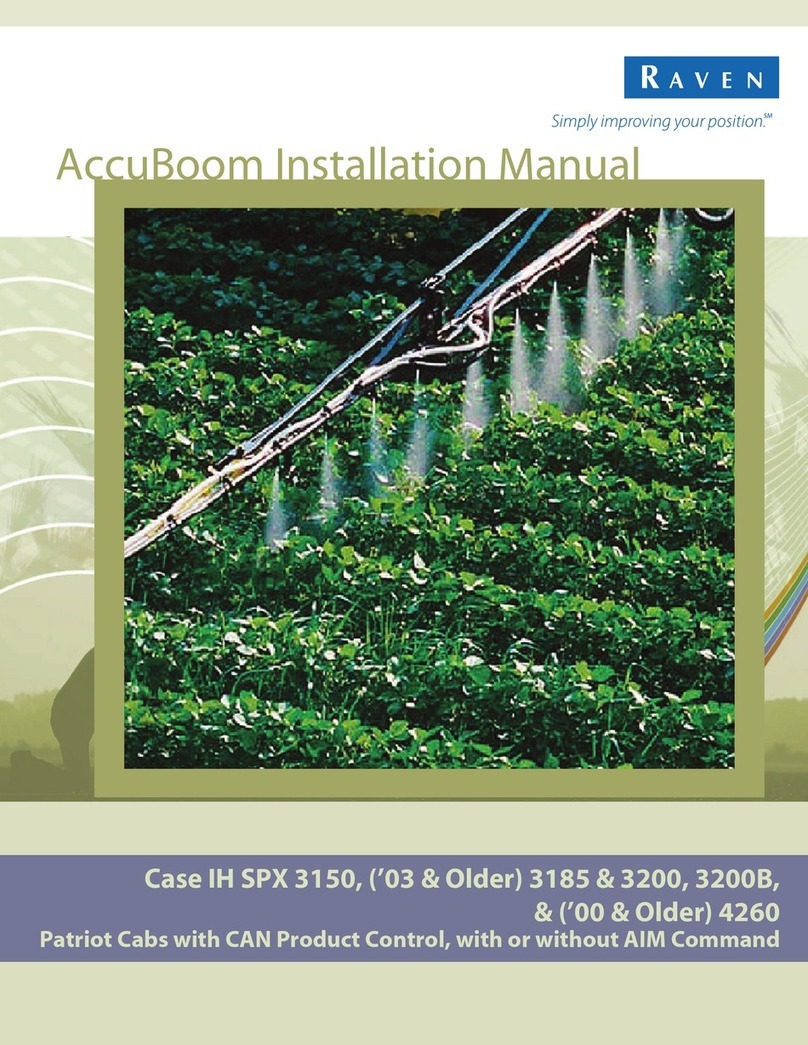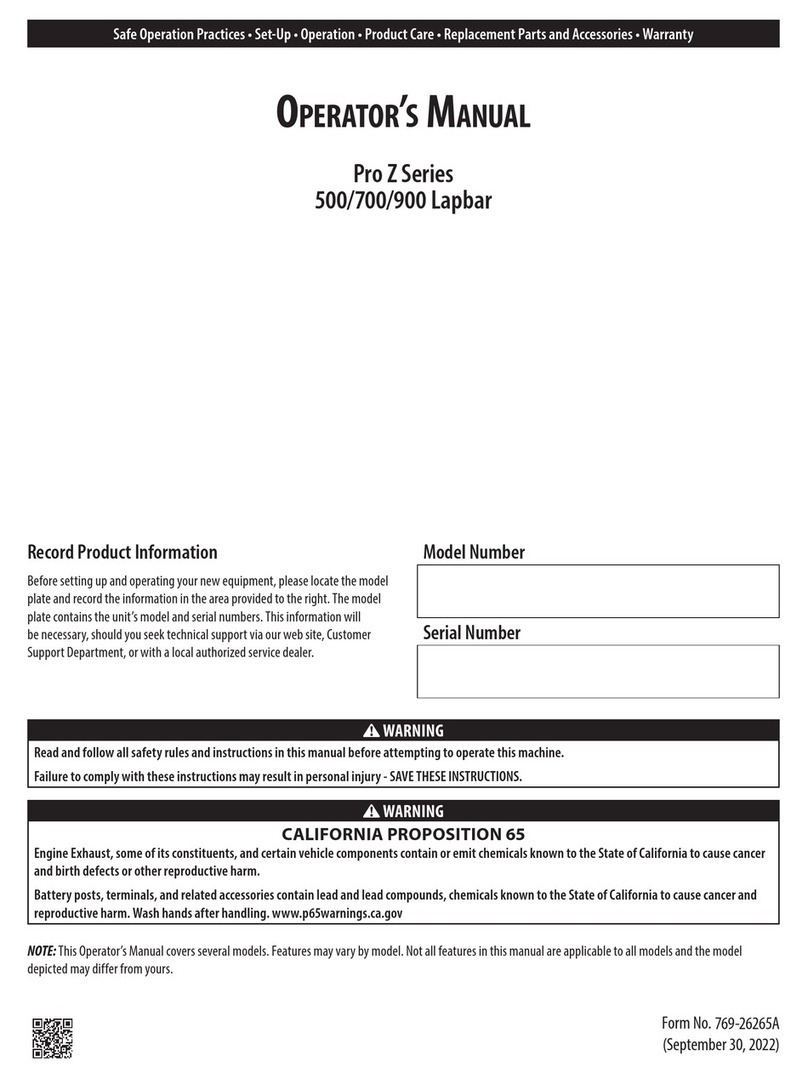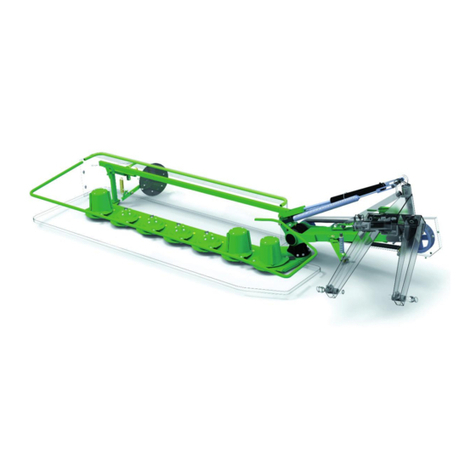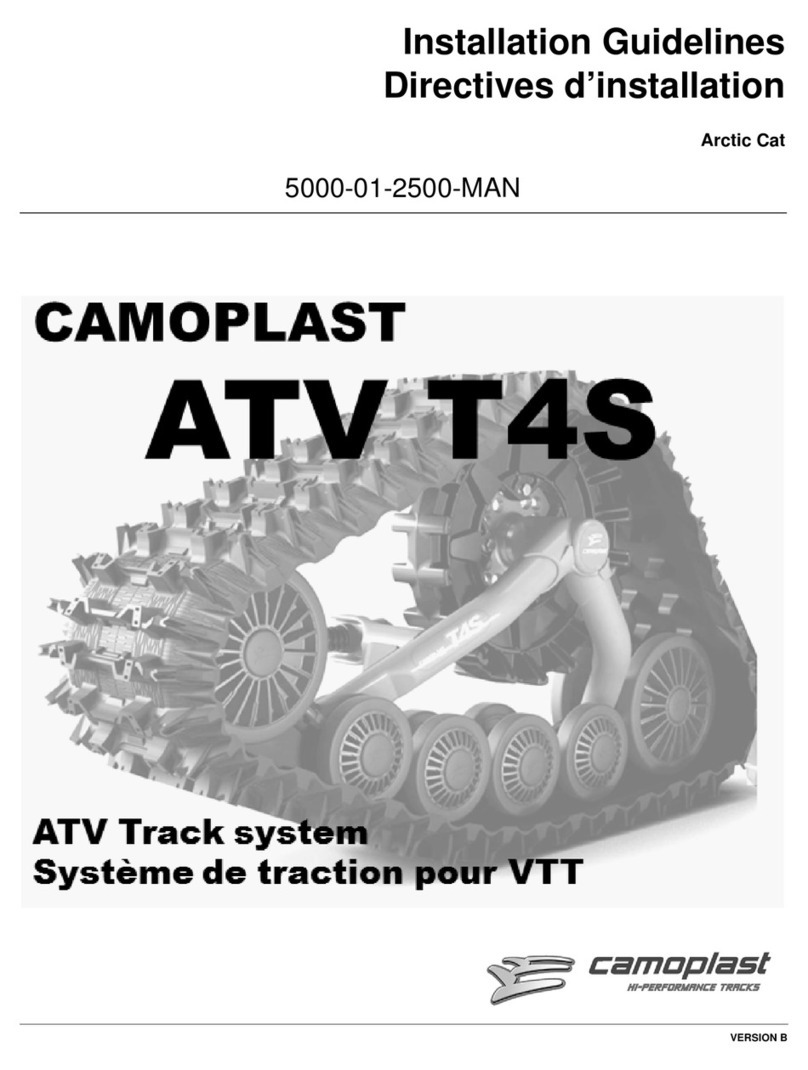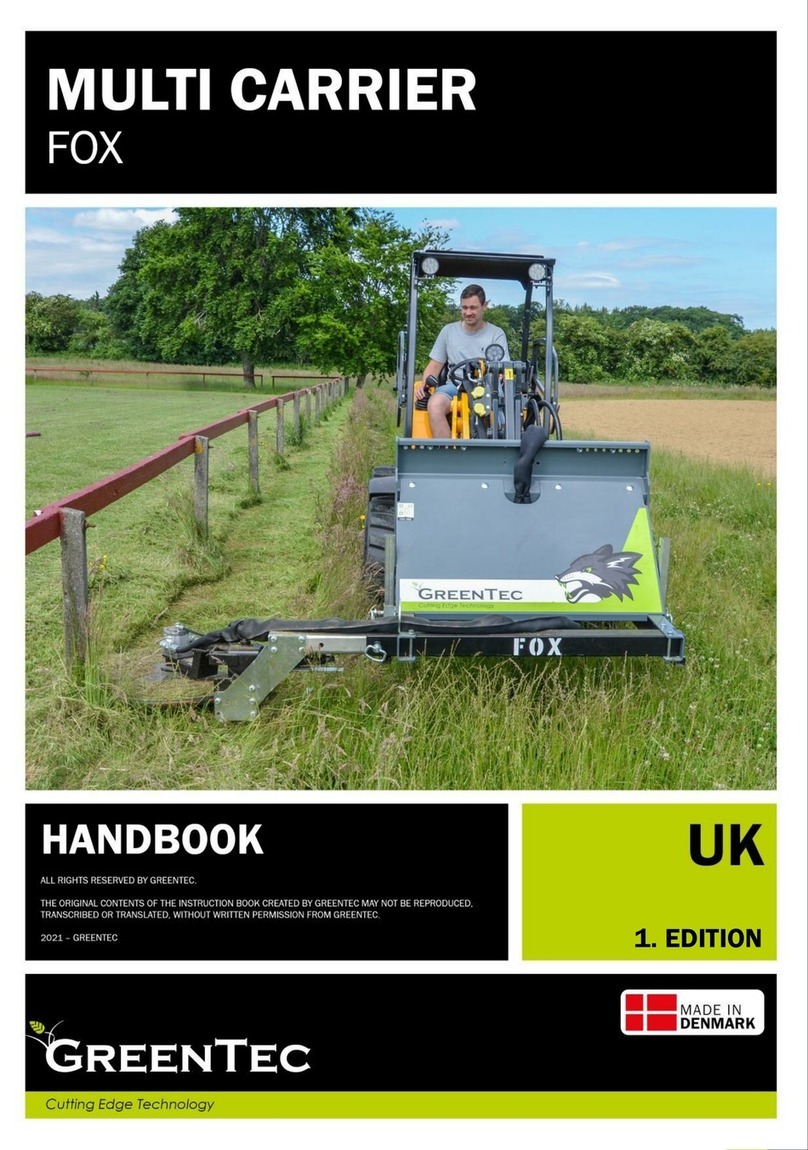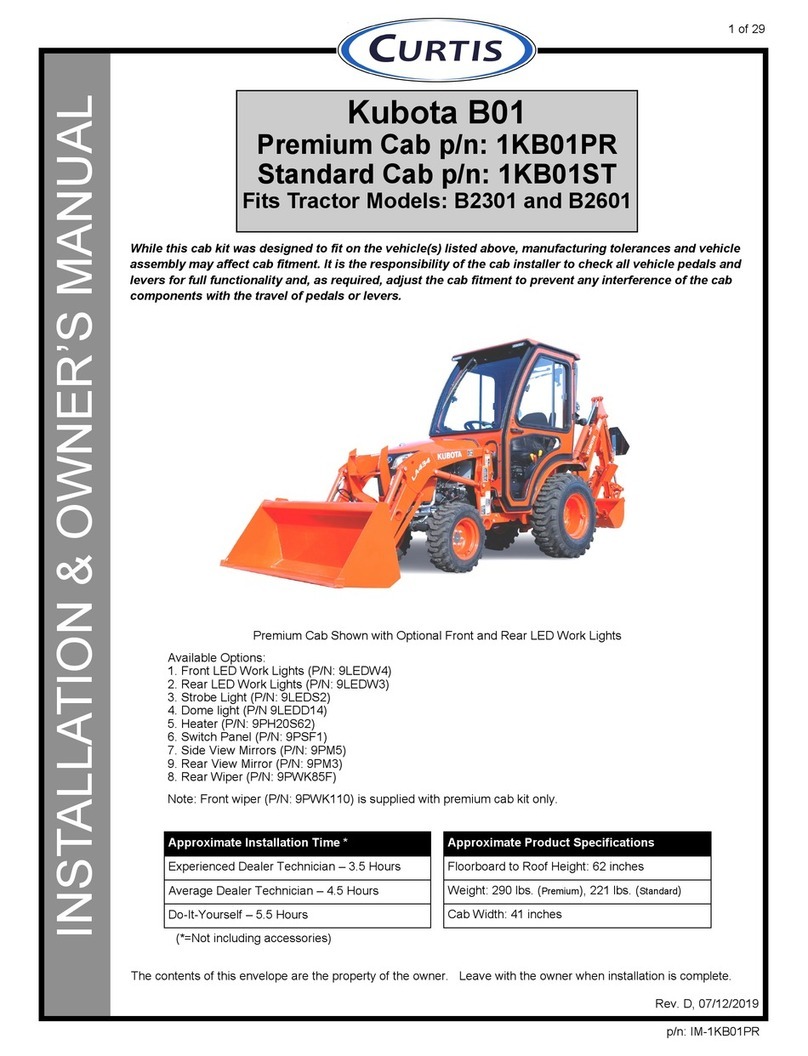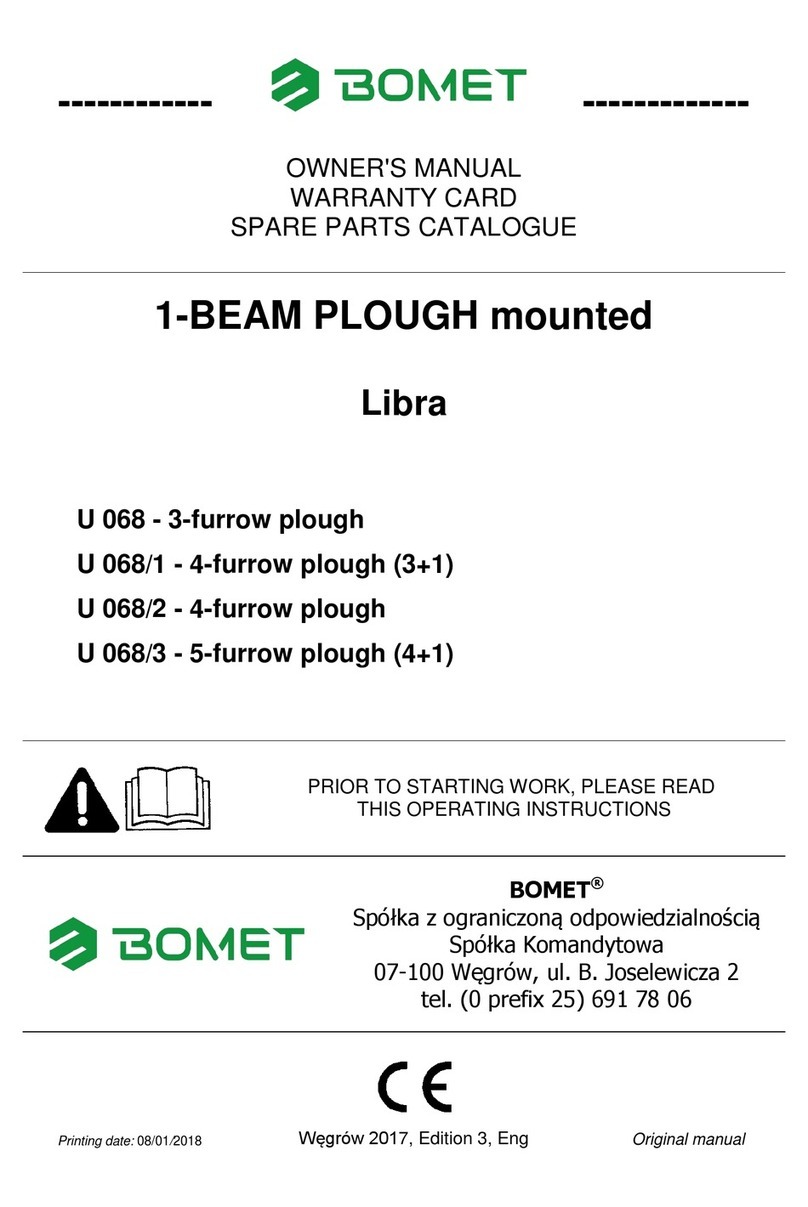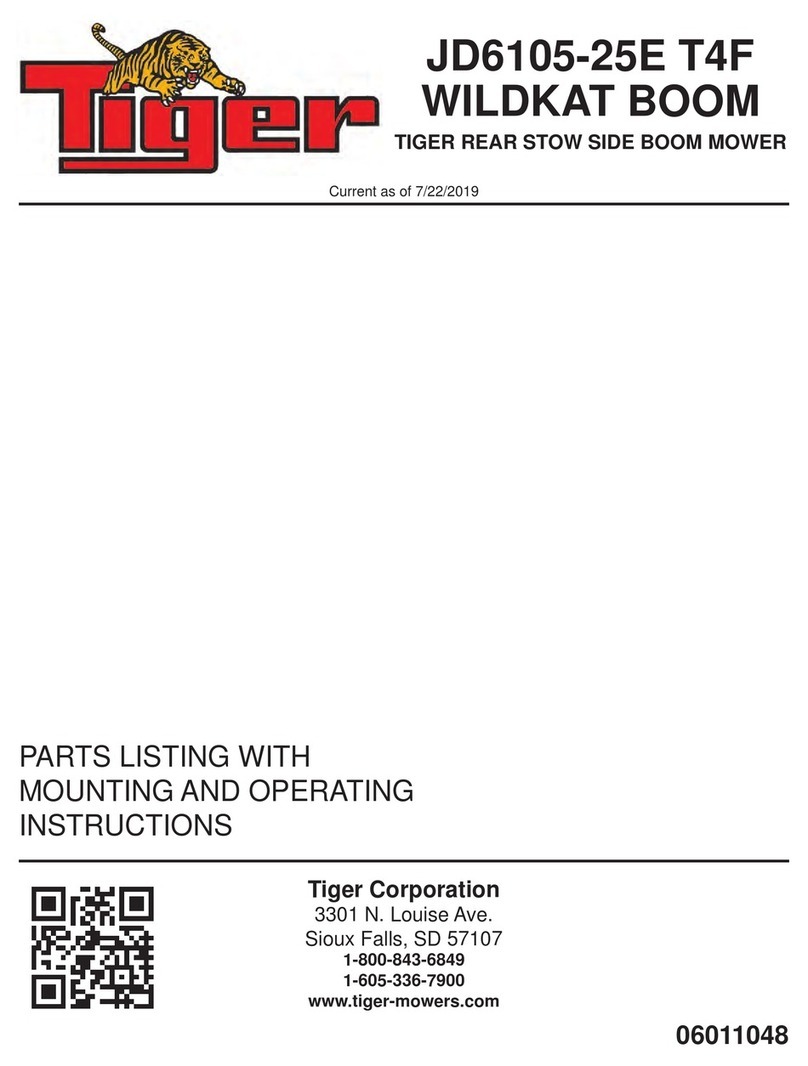GOLDONI TOSAPRATO TP60 Installation guide

TOSAPRATO TP60
uso e manutenzione
EMPLOI ET ENTRETIEN
OPERATION AND MAINTENANCE
MANEJO Y CUIDADO
BEDIENUNG UND INSTANDHALTUNG
USO E MANUTENÇÃO

1
GOLDONI S.p.A.
Sede Leg. e Stab.: 41012 MIGLIARINA DI CARPI - MODENA - ITALY
Telefono 0522 640111 Fax 0522 699002
www.goldoni.com
TP60

2
Fig. 1
Fig. 2

3
INDICE - TABLE DE MATIERES - INDEX - INDICE -
INHALT - ÍNDICE
==== I T A L I A N O ====....................................................................................5
1. NORME DI SICUREZZA...................................................................................6
2. IDENTIFICAZIONE MODELLO ........................................................................7
3. ISTRUZIONI PER L'USO..................................................................................7
3.1 AGGANCIO DEL TOSAPRATO ..............................................................7
3.2 REGOLAZIONE ALTEZZA DI TAGLIO ...................................................7
4. MANUTENZIONE - PULIZIA - LUBRIFICAZIONE ...........................................7
4.1 RIFORNIMENTI OLIO.................................................................................7
4.2 CESTELLO..................................................................................................8
4.3 COLTELLO..................................................................................................8
4.4 REGISTRAZIONE DEL FRENO .................................................................8
==== F R A N C A I S ==== ..................................................................................9
1. NORMES DE SECURITE ...............................................................................10
2. IDENTIFICATION DU MODELE .....................................................................11
3. INSTRUCTIONS D'UTILISATION...................................................................11
3.1 ACCROCHAGE DE LA TONDEUSE ........................................................11
3.2 REGLAGE DE LA HAUTEUR DE COUPE ...............................................11
4. ENTRETIEN - NETTOYAGE - LUBRIFICATION............................................11
4.1 RAVITAILLEMENT D'HUILE.....................................................................11
4.2 BAC DE RAMASSAGE .............................................................................12
4.3 COUTEAU .................................................................................................12
4.4 REGLAGE DU FREIN ...............................................................................12
==== E N G L I S H ====....................................................................................13
1. SAFETY REGULATIONS ...............................................................................14
2. MODEL IDENTIFICATION..............................................................................15
3. OPERATING INSTRUCTIONS.......................................................................15
3.1 HITCHING THE MOWER..........................................................................15
3.2 SETTING CUT HEIGHT............................................................................15
4. MAINTENANCE - CLEANING - LUBRIFICATION..........................................15
4.1 CHECKING AND ADDING OIL .................................................................15
4.2 GRASS CATCHER....................................................................................16
4.3 BLADE.......................................................................................................16
4.4 REGISTERING THE BRAKE ....................................................................16

4
==== E S P A Ñ O L ==== ..................................................................................17
1. NORMAS DE SEGURIDAD............................................................................18
2. IDENTIFICACION MODELO...........................................................................19
3. INSTRUCCIONES DE USO............................................................................19
3.1 ENGANCHE DE LA CORTACESPED ......................................................19
3.2 REGULACION ALTURA DE CORTE........................................................19
4. MANUTENCION - LIMPIEZA - LUBRICACION..............................................19
4.1 REABASTECIMIENTO ACEITE................................................................19
4.2 CESTO ......................................................................................................20
4.3 CUCHILLA.................................................................................................20
4.4 REGULACION DEL FRENO .....................................................................20
==== D E U T S C H ====..................................................................................21
1. SICHERHEITSVORSCHRIFTEN ...................................................................22
2. IDENTIFIKATION DES MODELLS .................................................................23
3. BEDIENUNGSANLEITUNG............................................................................23
3.1 EINHAKEN DES RASENMÄHERS...........................................................23
3.2 EINSTELLUNG DER SCHNITTHÖHE......................................................23
4. WARTUNG - REINIGUNG - SCHMIEREN .....................................................23
4.1 ÖLFÜLLUNGEN........................................................................................23
4.2 GRASAUFFANGKORB.............................................................................24
4.3 MESSER ...................................................................................................24
4.4 NACHSTELLEN DER BREMSE ...............................................................24
==== P O R T U G U Ê S ====...........................................................................25
1. NORMAS DE SEGURANÇA ..........................................................................26
2. IDEFTIFICAÇÃO DO MODELO......................................................................27
3. ISTRUÇÕES PARA O USO............................................................................27
3.1 ENGATE DA CORTA-RELVAS.................................................................27
3.2 REGULAGEM DA ALTURA DO CORTE ..................................................27
4. MANUTENÇÃO - LIMPEZA - LUBRIFICAÇÃO..............................................27
4.1 ABASTECIMENTO DE ÓLEO...................................................................27
4.2 SACO RECOLHEDOR DE RELVAS.........................................................28
4.3 FACA .........................................................................................................28
4.4 REGULAGEM DO FREIO .........................................................................28

5
==== I T A L I A N O ====
Le illustrazioni, le descrizioni e le caratteristiche contenute nel presente libretto
non sono impegnative poiché, fermo restando le caratteristiche principali, la
nostra Ditta si riserva il diritto di apportare in qualsiasi momento, modifiche
dettate da esigenze tecniche o commerciali.
La fiducia accordata alla nostra Ditta nel preferire prodotti del nostro Marchio,
sarà ampiamente ripagata dalle prestazioni che ella ne potrà ottenere. Un
corretto uso e una puntuale manutenzione, la ripagheranno ampiamente in
prestazioni, produttività e risparmio.

6
1. NORME DI SICUREZZA
Per rendere più sicuro il vostro lavoro, la prudenza e'
insostituibile per prevenire incidenti.
A tale scopo vengono riportate le seguenti avvertenze.
La non osservanza delle norme sottoelencate, libera la nostra Ditta da ogni
responsabilità.
1. Spegnere il motore quando si sostituiscono le attrezzature di lavoro.
2. Spegnere il motore durante il trasporto della macchina.
3. Operando su terreni in pendenza, e' importante che un altro operatore
impedisca lo slittamento o il rovesciamento della macchina, tramite l'ausilio
di una fune mantenuta in tensione nel lato a monte e a debita distanza dalla
macchina.
4. Ogni trasferimento o manovra dev'essere effettuato con il comando
dell'attrezzatura disinserito.
5. L'operatore deve mantenersi a debita distanza dall'attrezzatura.
6. Le protezioni dell'attrezzatura devono essere registrate in modo da impedire
che eventuali sassi, erba o altro, possano investire l'operatore o le cose
poste nelle vicinanze dell'attrezzatura.
7. Durante l'accensione del motore, l'operatore deve mantenersi lateralmente
alla macchina.
8. Non effettuare manutenzioni, riparazioni, interventi di alcun genere sulla
macchina o sulle attrezzature collegate, prima di aver fermato il motore,
disinserito la chiavetta dalla macchina e adagiato l'attrezzatura in terra.
E' da porre particolare attenzione alla lama di taglio: prima di ogni intervento
accertarsi sempre che sia ferma.
9. Durante la fase di lavoro, osservare tutte le precauzioni per impedire
l'avvicinarsi di terzi nel raggio d'azione della macchina.
10.Le targhette e le decalcomanie sono un indispensabile mezzo di
informazione per un corretto uso della macchina, pertanto devono essere
sostituite quando sono illeggibili o logorate.
11.L'utente deve verificare che ogni parte della macchina e, in modo
particolare gli organi di sicurezza, rispondano sempre allo scopo per i quali
sono preposti. Pertanto devono essere mantenuti in perfetta efficienza.
Qualora si evidenzino disfunzioni, occorre provvedere tempestivamente al
loro ripristino anche ricorrendo ai nostri Centri di Assistenza.
L'inosservanza, solleva il costruttore da ogni responsabilità.

7
2. IDENTIFICAZIONE MODELLO
L'identificazione del modello e' rilevabile dalla punzonatura posta sulla nervatura
di fermo rotazione (n.7 fig.1)
3. ISTRUZIONI PER L'USO
3.1 AGGANCIO DEL TOSAPRATO
Con motore fermo, innestare il canotto del tosaprato nell'attacco rapido n.8 fig.1
della macchina motrice.
Disporre i distanziali n.6 fig.1 sopra o sotto al perno ruota, in base alle ruote
montate sulla macchina motrice, in modo che il tosaprato risulti orizzontale.
Le ruote consentite sono da 3.50x8" a 4.0x10" (mm.430 massimo diamtero
esterno ammesso).
Prima di avviare il motore, accertarsi che la presa di forza sia in folle. Innestare
prima la presa di forza e successivamente la marcia di avanzamento.
⇒Direzione di avanzamento
3.2 REGOLAZIONE ALTEZZA DI TAGLIO
L'altezza di taglio è regolabile su quattro diversi livelli tramite la leva 1 fig.1.
MIN - Leva in avanti: altezza di taglio minima.
MAX - Leva indietro: altezza di taglio massima.
4. MANUTENZIONE - PULIZIA - LUBRIFICAZIONE
4.1 RIFORNIMENTI OLIO
Ogni 50 ore di lavoro verificare e ripristinare il livello dell'olio tramite il tappo 2
fig. 1. Il livello dell'olio deve collocarsi a 50mm al di sotto del piano del foro.
Ogni 200 ore di lavoro scaricare l'olio tramite il tappo 2 (fig. 1) capovolgendo
l'attrezzo.
Si consiglia di utilizzare AGIP ROTRA MP SAE 80W/90 nella quantità d circa 0,4
litri. L'impiego di lubrificanti di altre marche, comporta il rispetto delle seguenti
specifiche:
Olio Agip Rotra MP SAE 80W/90
Viscosità a 40° C (mm2/s)...............144
Viscosità a 100° C (mm2/s) ..............15
Viscosità a -26° C (mPa.s)........110000
Indice di viscosità ............................104
Punto di infiammabilità V.A. (°C).....210
Punto di scorrimento (°C)................ -27
Massa Volumica a 15 °C (kg/l).....0,900

8
4.2 CESTELLO
Prima di togliere il cestello mettere in folle la presa di forza e accertarsi che il
coltello sia fermo.
Vuotare il cestello dell'erba. Smontando il cestello, il deflettore n.4 fig.1 si chiude
automaticamente.
Se si usa il tosaprato senza cestello, il deflettore rimane chiuso e l'espulsione
dell'erba avviene dal lato destro della macchina.
4.3 COLTELLO
Fermare il motore e attendere che il coltello sia fermo, staccare il tosaprato dalla
macchina e smontare il coltello tramite le due viti n.3 fig.1. All'occorrenza affilare
o sostituire il coltello.
4.4 REGISTRAZIONE DEL FRENO
Nel caso che il tempo di arresto del coltello aumentasse in modo eccessivo,
procedere alla registrazione del freno, operando nel seguente modo:
Capovolgere il tosaprato, ponendo la parte anteriore in alto, togliere il coperchio
1 fig.2 allentare il dado 2 di circa 1/2 giro (in senso antiorario), quindi rimontare il
coperchio 1.

9
==== F R A N C A I S ====
Les illustrations, les descriptions et les caractéristiques contenues dans cette
notice n'engagent pas la responsabilité de notre Société qui, tout en laissant
inchangées les caractéristiques principales, se réserve le droit d'apporter à tout
moment des modifications pour des exigences techniques ou commerciales.
La confiance accordée à notre Société par le choix de produits portant notre
Marque sera largement récompensée par les performances que vous pourrez
en obtenir. Une utilisation correcte et un entretien régulier vous récompenserons
largement sous forme de performances, productivité et économie.

10
1. NORMES DE SECURITE
Pour travailler en toute sécurité et pour prévenir les
accidents, la prudence est irremplaçable.
Voici quelques recommandations utiles pour votre sécurité.
L'inobservation des consignes ci-dessous dégage notre
Maison de toute responsabilité.
1. Arrêter le moteur lors du remplacement des outils de travail.
2. Arrêter le moteur pendant le transport de la machine.
3. Quand vous travaillez sur des terrains en pente il est important qu'un autre
opérateur empêche la machine de glisser ou de se renverser à l'aide d'un
câble tendu en amont et à une distance convenable de la machine.
4. Les déplacements ou les manoeuvres doivent être effectués avec la
commande de l'outil désenclenchée.
5. L'opérateur doit rester à une distance de sécurité de l'outil.
6. Les protections de l'outil doivent être réglées de manière à empêcher que les
cailloux, l'herbe ou autre puissent atteindre l'opérateur ou les objets qui se
trouveraient à proximité de la machine.
7. Pendant l'allumage du moteur l'opérateur doit se mettre à côté de la machine.
8. Ne pas effectuer des opérations d'entretien, de réparation ou toute autre
intervention sur la machine ou sur les outils attelés sans avoir d'abord arrêté
le moteur, retiré la clé de contact de la machine et posé l'outil par terre.
Faire tout particulièrement attention à la lame de coupe: avant toute intervention
vérifier qu'elle est bien arrêtée!
9. Pendant le travail, observer toutes les précautions afin que personne ne
s'approche du rayon d'action de la machine.
10.Les plaques et les décalcomanies sont un moyen indispensable d'information
pour utiliser la machine correctement; il faut les remplacer dès qu'elles sont
illisibles ou abîmées.
11.L'utilisateur doit vérifier que toutes les parties de la machine, et en
particulier les organes de sécurité, soient toujours conformes et performants
pour les emplois pour lesquels ils sont prévus. Il faut donc les maintenir en
parfait état. Dans le cas de dysfonctionnements, il faudra les remettre en état
aussitôt en ayant recours même à nos Centres Après-Vente. L'inobservation
de ces consignes, libère le constructeur de toute responsabilité.

11
2. IDENTIFICATION DU MODELE
L'identification du modèle est lisible sur la renfort d'arrêt de la rotation (n.7 fig.1)
3. INSTRUCTIONS D'UTILISATION
3.1 ACCROCHAGE DE LA TONDEUSE
Le moteur étant arrêté, emboîter le fourreau de la tondeuse dans le raccord
rapide n.8 fig.1 de la machine motrice.
Placer les entretoises n.6 fig.1 au-dessus et en dessous de l'axe suivant le type
de roues montées sur la machine motrice, de manière à ce que la tondeuse soit
horizontale.
Les roues admises sont de 3.50x8" à 4.0x10" (mm.430 diamètre maxi. extérieur
admis).
Avant de mettre le moteur en marche, s'assurer que la prise de force est au
point mort. Enclencher d'abord la prise de force et ensuite passer la vitesse
d'avancement.
⇒Direction d'avancement
3.2 REGLAGE DE LA HAUTEUR DE COUPE
La hauteur de coupe est réglable sur quatre niveaux différents par le levier 1
fig.1.
MINI - Levier en avant: hauteur de coupe mini.
MAXI - Levier arrière: hauteur de coupe maxi.
4. ENTRETIEN - NETTOYAGE - LUBRIFICATION
4.1 RAVITAILLEMENT D'HUILE
Toutes les 50 heures de travail vérifier et rétablir le niveau de l'huile par le
bouchon 2 fig. 1. Le niveau de l'huile doit être 50mm au-dessous du niveau du
trou.
Toutes les 200 heures de travail vidanger l'huile par le bouchon 2 (fig. 1) en
renversant l'outil. L'utilisation de l'huile AGIP ROTRA MP SAE 80W/90 est
préconisée; quantité: environ 0,4 litres. L'utilisation de lubrifiants des autres
marques, comporte le respect des spécifications suivantes :
Huile Agip Rotra MP SAE 80W/90
Viscosité à 40° C (mm2/s)...............144
Viscosité à 100° C (mm2/s) ..............15
Viscosité à -26° C (mPa.s)........110000
Indice de viscosité...........................104
Point d'éclair V.A. (°C) ....................210
Point d'écoulement (°C) .................. -27
Masse Volumique à 15 °C (kg/l) 0,900

12
4.2 BAC DE RAMASSAGE
Avant d'enlever le bac mettre la prise de force au point mort et s'assurer que le
couteau est bien arrêté.
Vider le bac. En démontant le bac, le déflecteur n.4 fig.1 se ferme
automatiquement.
En cas d'utilisation de la tondeuse sans bac, le déflecteur reste fermé et
l'expulsion de l'herbe a lieu du côté droit de la machine.
4.3 COUTEAU
Arrêter le moteur et attendre que le couteau soit également arrêté, débrancher
la tondeuse de la machine et démonter le couteau en enlevant les deux vis n.3
fig.1. Le cas échéant affûter ou remplacer le couteau.
4.4 REGLAGE DU FREIN
Si le temps d'arrêt du couteau augmente excessivement, procéder au réglage
du frein en effectuant les opérations suivantes:
Retourner la tondeuse en mettant la partie avant en haut, enlever le couvercle 1
fig.2, desserrer l'écrou 2 d'environ un demi tour (sens anti-horaire) et ensuite
monter le couvercle 1.

13
==== E N G L I S H ====
The illustrations, descriptions and specifications given in this Manual are not
binding on the manufacturer who, while main taining the main specifications,
reserves the right to make any and all changes, at any time, in compliance with
technical or commercial requirements without prior notice and without obligation
to make such changes to previously manufactured equipment.
The confidence you have shown in our company by choosing equipment
carrying our trademark will be amply repaid by the excellent service it will give
you over the years. Correct use and normal routine maintenance will generously
rewarded in performance, output and savings.

14
1. SAFETY REGULATIONS
Prudence is essential when it comes to on the job safety and to
prevent industrial accidents.
The following cautions are offered here for this precise purpose.
Failure to follow the regulations given below exonerates our
firm from all civil and penal responsibility.
1. Switch off the engine when changing work attachments.
2. Switch off the engine when transporting the machine.
3. If you are working of a steep gradient, a second operator must prevent the
tractor from sliding or tipping over. He can do this with the help of a tensioned
cable upstream from the tractor and at a safe distance.
4. Every transfer or manuever should be made with the attachment control
disengaged.
5. The operator must keep a safe distance from the attachment.
6. Attachment guards should be positioned to prevent stones, grass or other
material from striking the operator or objects near the attachment.
7. When starting the engine, the operator should stand to the side of the tractor.
8. Never service, repair or carry out any kind of work on the tractor or attached
implements unless the engine has been turned off, the key removed from the
starter and the attachment lowered to the ground.
Pay extra attention to the cutting blade. Before any work, it must have come to a
complete stop.
9. The operator must make certain there are no persons, animals or things in
the machine's working range.
10.Safety plates and stickers are essential means of information on correct use
of the machine. Replace them when they are illegible or badly worn.
11.The operator must check to be certain that every part of the tractor and,
especially the safety devices, are in good working condition and work to
specs. They should be kept in perfect working condition. If you note any
malfunctioning, fix or repair them in good time. If necessary contact your
nearest Assistance Centre.
Failure to observe these instructions releases manufacturer from all liability.

15
2. MODEL IDENTIFICATION
Model identification data are punched on the rotation stop reinforcement (n.7
fig.1)
3. OPERATING INSTRUCTIONS
3.1 HITCHING THE MOWER
The engine must be stopped. Push the mower sleeve into the tractor's quick
couple n.8 fig.1.
Place spacers n.6 fig.1 over and under the wheel pin, depending on the type of
wheels mounted on the tractor, so that the mower is horizontal.
Admissible wheels are from 3.50x8" to 4.0x10" (max. outside diam. is 430 mm).
Before starting the engine, check to make sure the PTO is in neutral. First
engage the PTO and the forward gear.
⇒Drive direction
3.2 SETTING CUT HEIGHT
Four cut heights can be set with lever 1 fig.1.
MIN - Leva forward: minimum cut height.
MAX - Leva back: maximum cut height.
4. MAINTENANCE - CLEANING - LUBRIFICATION
4.1 CHECKING AND ADDING OIL
After every 50 work hours check the oil level and top up as needed through filler
plug 2 fig. 1. The level of the oil must be 50 mm below the top of the hole.
After every 200 work hours drain the oil from filler plug 2 (fig.1) by turning the
attachment upside down.
It is advisable to use AGIP ROTRA MP SAE 80W/90 oil. Quantity required is
about 0,4 liter.
Comply with the following specifications if other lubricant makes are used:
Agip Rotra MP SAE 80W/90 oil
Viscosity at 40° C (mm2/s)..............144
Viscosity to 100° C (mm2/s)..............15
Viscosity at -26° C (mPa.s) .......110000
Viscosity index ................................104
Flash point V.A. (°C) .......................210
Pour point (°C) ................................ -27
Absolute gravity at 15 °C (Kg/l)....0.900

16
4.2 GRASS CATCHER
Before removing the grass catcher put the PTO in neutral and check to make
sure the blade has stopped.
Empty the grass from the catcher. When the catcher is removed the deflector
plate 4 fig.1 shuts automatically.
If the mower is used without the catcher, the deflector plate stays shut and the
grass is evacuated from the right of the machine.
4.3 BLADE
Stop the engine and wait until the blade has stopped completely. Detach the
mower from the tractor and remove the two screws n. 3 fig.1 to take the blade
off. Sharpen or replace the blade as necessary.
4.4 REGISTERING THE BRAKE
If the time needed for the blade of come to a stop is too long, register its brake
as follows:
Tip the mower over so that the front is accessible. Remove cover 1 fig.2 slacken
off nut 2 about a 1/2 turn (anti-clockwise, then replace cover 1.

17
==== E S P A Ñ O L ====
Las ilustraciones, las descripciones y las características que con tiene el
presente manual no tienen carácter de compromiso puesto que, aun
permaneciendo fijas las características principales, nuestra Firm a se reserva el
derecho de aportar en cualquier momento modificaciones dictadas por
exigencias de tipo técnico o comercial.
La confianza depositada en nuestra Firma, al haber preferido productos de
nuestra Marca, se verá ampliamente correspondida por las prestaciones que de
ella podrán obtenerse. Un uso correcto y un puntual mantenimiento, le
gratificarán ampliamente en materia de prestaciones, productividad y ahorro.

18
1. NORMAS DE SEGURIDAD
Para una mayor seguridad en el trabajo, la prudencia es
insostituible como prevención de accidentes.
Con tal fin se hallan expuestas las siguientes advertencias.
La inobservancia de las normas citadas a continuación exime a
nuestra Firma de cualquier responsabilidad.
1. Desconectar el motor cuando hay que sustituir los equipos de trabajo.
2. Desconectar el motor durante el transporte de la máquina.
3. Cuando se trabaja en terrenos inclinados, es importante che otro operador
evite el deslizamiento o el vuelco de la máquina, mediante un cable de
tensión en el lado hacia arriba y a cierta distancia de la máquina.
4. Cualquier traslado o maniobra tiene que ser efectuado con el comando del
equipo desconectado.
5. El operador debe ponerse a cierta distancia del equipo.
6. Las protecciones del equipo deben ser ajustadas para evitar que eventuales
piedras, hierba u otro puedan caer encima del operador o de las cosas que
se encuentran cerca del equipo.
7. Durante la puesta en marcha del motor, el operador debe colocarse al lado
de la máquina.
8. No efectuar mantenimientos, reparaciones, trabajos de ningún tipo en la
máquina o en los aperos enganchados, antes de apagar el motor,
desconectar la llave de la máquina y colocar el apero en el suelo.
Hay que poner particular atención a la hoja de corte: antes de cualquier trabajo
asegurarse siempre que esté parada.
9. Durante la fase de trabajo, es necesario respetar todas las precauciones
para evitar el acercamiento de extraños en el radio de acción de la máquina.
10.Las placas y las calcomanías son un indispensable medio de información
para un correcto uso de la máquina; por lo tanto, hay que sustituirlas cuando
resultan ilegibles o bien desgastadas.
11.El usuario debe verificar que cada parte de la máquina y, sobre todo los
órganos de seguridad, correspondan siempre al objeto por el cual han sido
proyectados. Por lo tanto deben ser mantenidos en perfecta eficiencia. En el
caso en que ocurran interrupciones funcionales, hace falta restablecerlos
rápidamente aún dirigiéndose a nuestros Centros de Asistencia.
La inobservancia libera el constructor de toda responsabilidad.

19
2. IDENTIFICACION MODELO
La identificación del modelo se aprecia en el punzonado presente en en
refuerzo del bloqueo rotación (n.7 fig.1)
3. INSTRUCCIONES DE USO
3.1 ENGANCHE DE LA CORTACESPED
Con el motor parado, conectar el tubo de la cortacésped en el enganche rápido
n.8 fig.1 de la máquina motriz.
Colocar los distanciadores n.6 fig.1 sobre o debajo del perno rueda, de acuerdo
a las ruedas montadas en la máquina motriz, de mantera tal que la cortacésped
resulte horizontal.
Las ruedas admitidas son de 3.50x8" a 4.0x10" (430 mm máximo diámetro
externo admitido).
Antes de poner en marcha el motor, controlar que la toma de fuerza este en
punto muerto. Activar primero la toma de fuerza y luego la marcha de avance.
⇒Dirección de avance
3.2 REGULACION ALTURA DE CORTE
La altura de corte puede ser regulable en cuatro niveles distintos mediante la
palanca 1 fig.1.
MIN - Palanca hacia adelante: altura de corte mínima.
MAX - Palanca hacia atrás: altura de corte máxima.
4. MANUTENCION - LIMPIEZA - LUBRICACION
4.1 REABASTECIMIENTO ACEITE
Cada 50 horas de trabajo controlar y mantener el nivel de aceite mediante el
tapón 2 fig. 1. El nivel del aceite debe situarse a 50mm por debajo del plano del
orificio.
Cada 200 horas de trabajo descargar el aceite mediante el tapón 2 (fig. 1)
dando vuelta el equipo. Se aconseja de usar aceite AGIP ROTRA MP SAE
80W/90 y una cantidad aproximada de 0,4 litros. El empleo de lubricantes de
otras marcas, debe implicar el respeto de las siguientes especificaciones:
Aceite Agip Rotra MP SAE 80W/90
Viscosidad a 40° C (mm2/s) ...........144
Viscosidad a 100° C (mm2/s) ...........15
Viscosidad a -26° C (mPa.s).....110000
Indice de viscosidad........................104
Punto de inflamabilidad V.A. (°C) ..210
Punto de escurrimiento (°C)............ -27
Volumen masa a 15 °C (kg/l) ......0,900
Table of contents
Languages:
Other GOLDONI Tractor Accessories manuals
Popular Tractor Accessories manuals by other brands
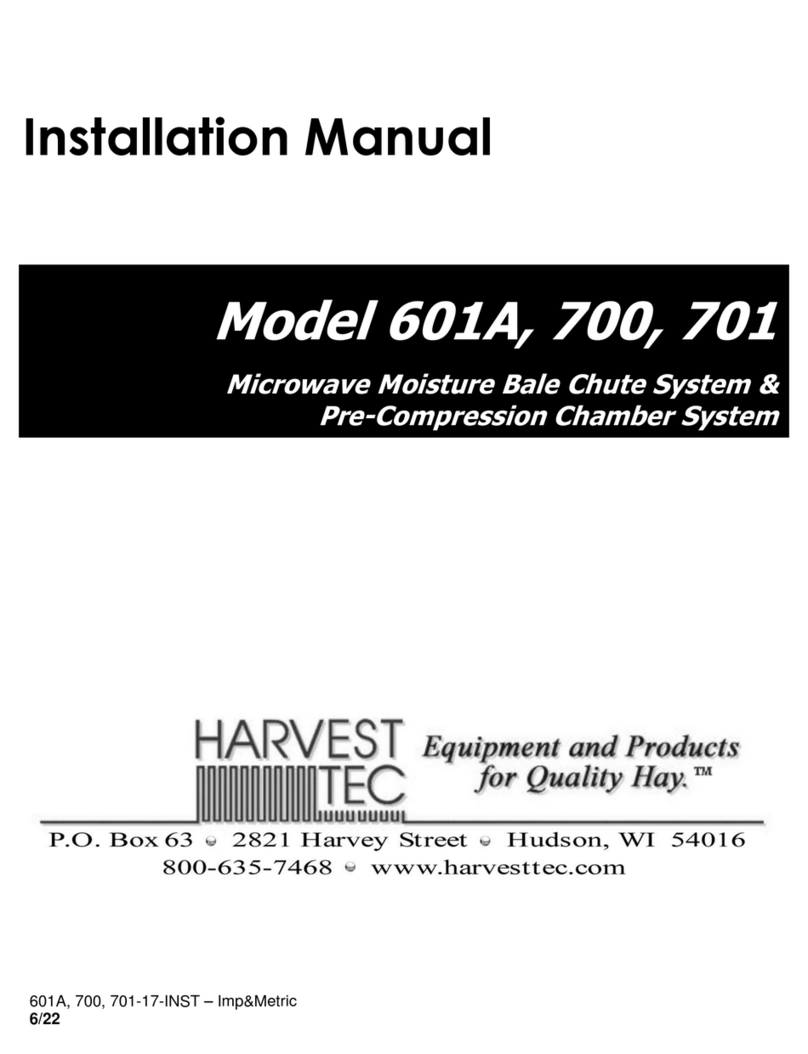
Harvest TEC
Harvest TEC 601A installation manual
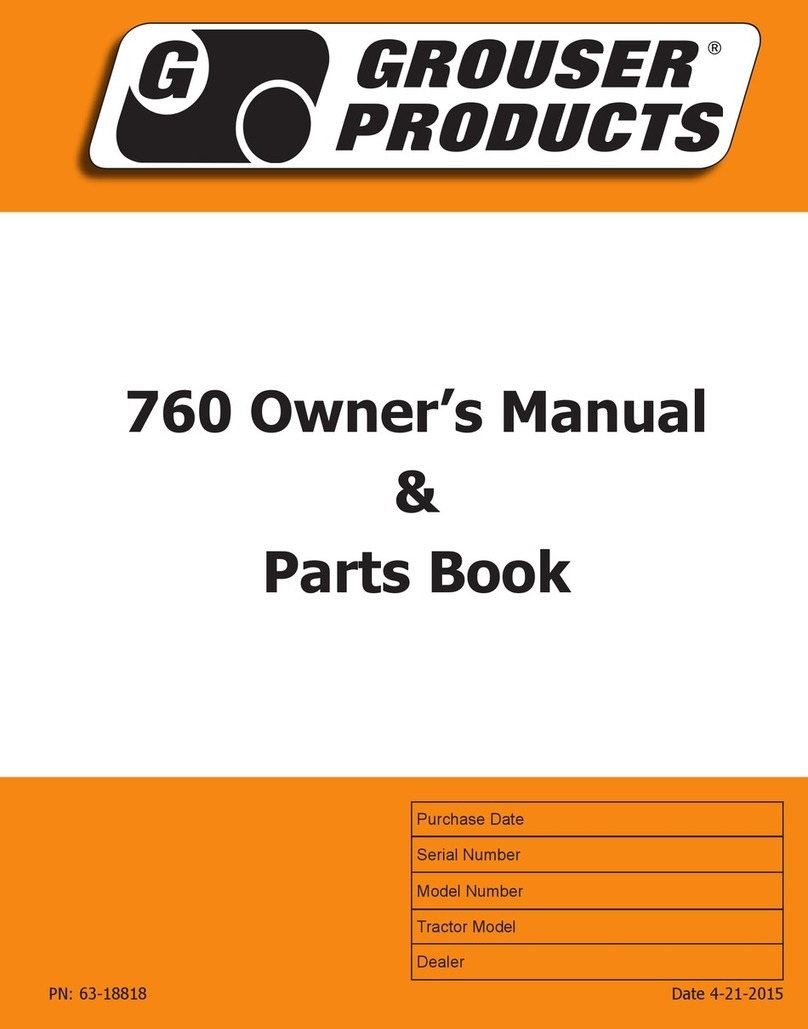
Grouser Products
Grouser Products 760 Owner's manual & parts book
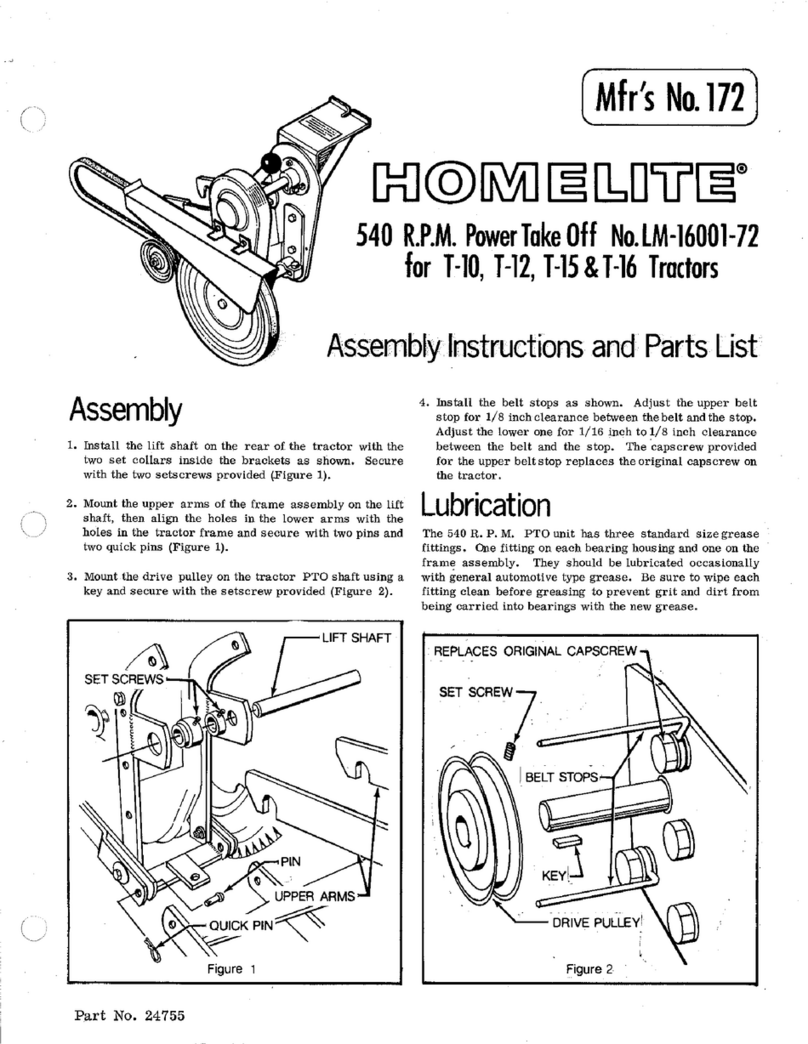
Homelite
Homelite 172 Assembly instructions and parts list
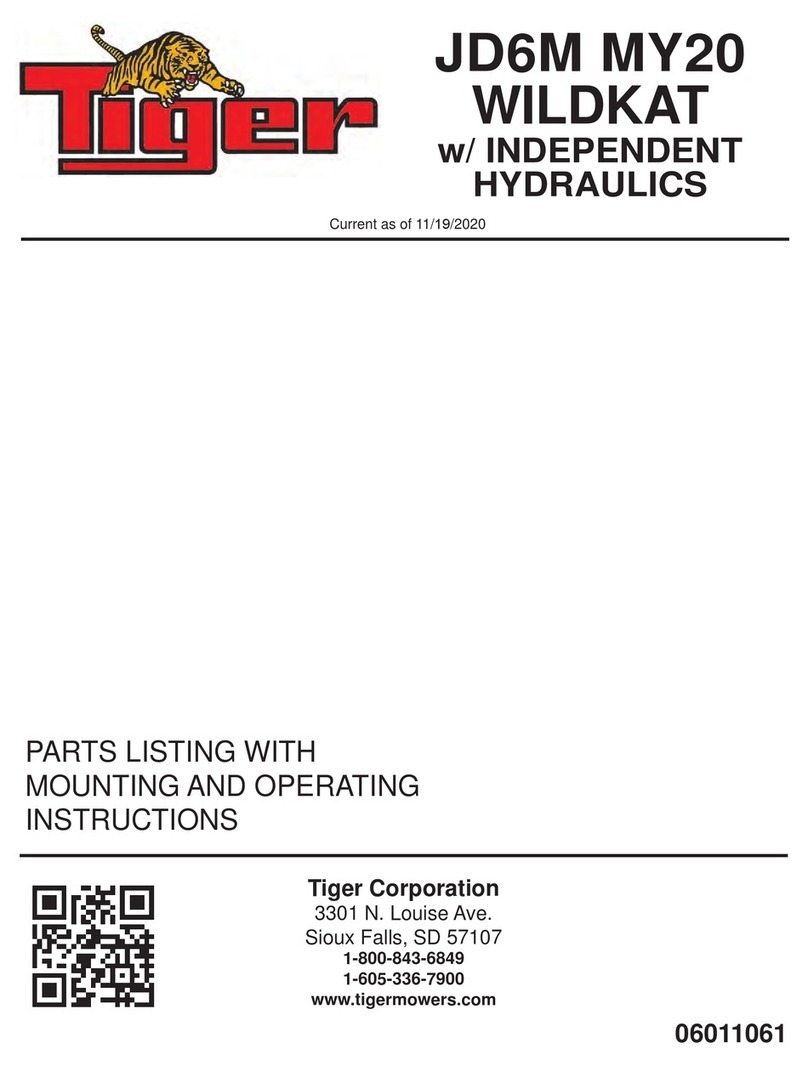
Tiger
Tiger JD6M MY20 Mounting and operating instructions
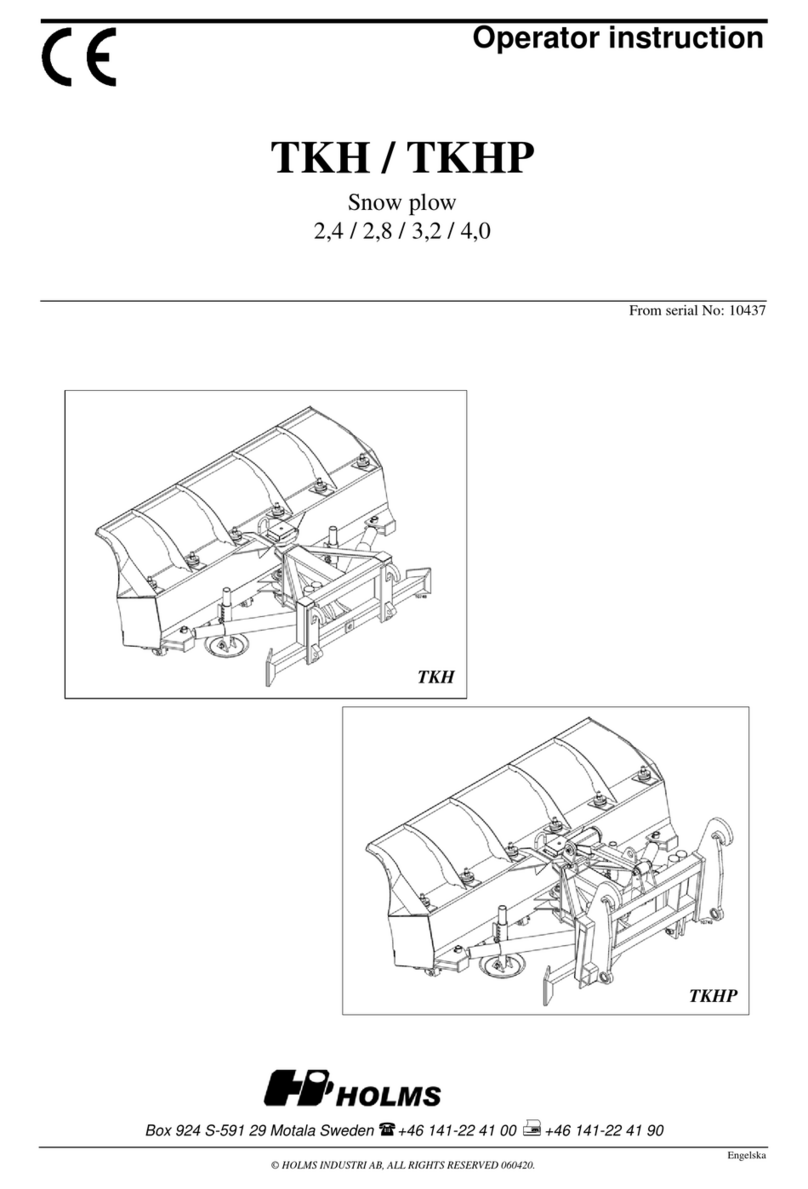
HOLMS
HOLMS TKH Operator's instruction
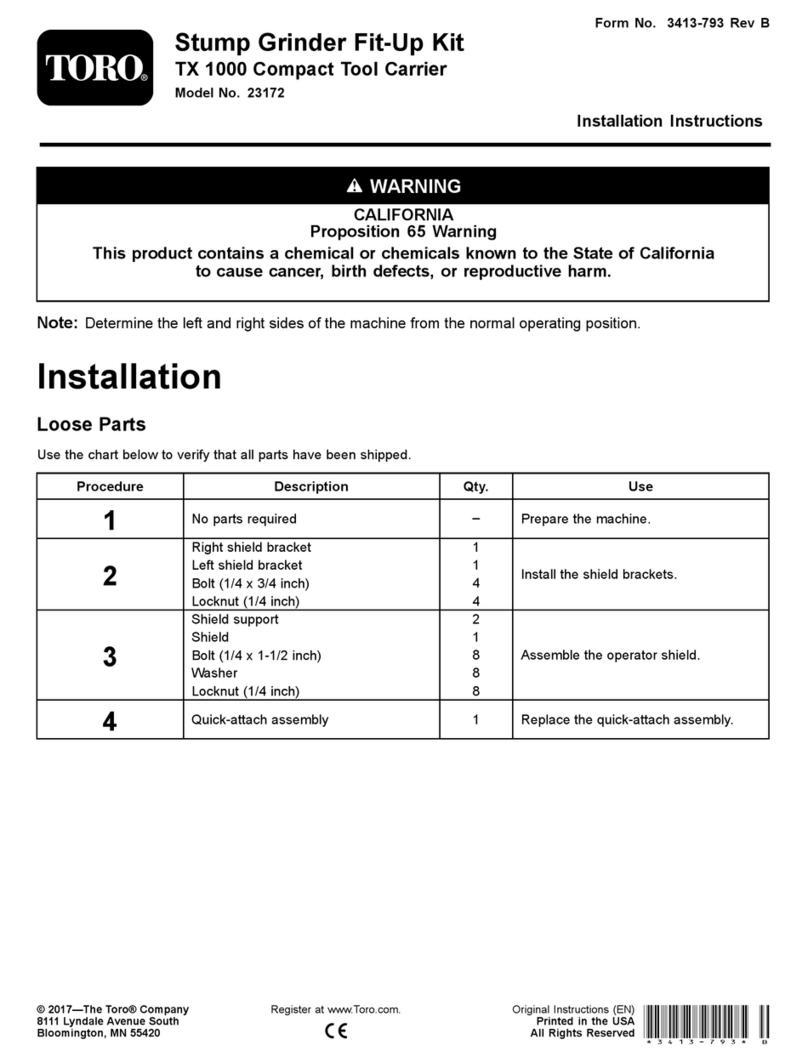
Toro
Toro 23172 installation instructions

